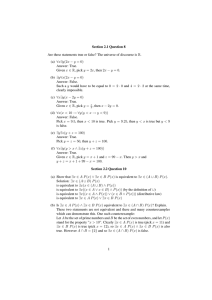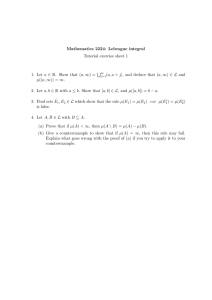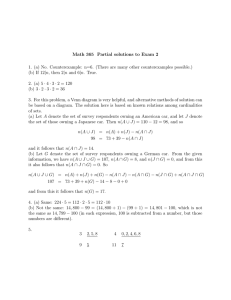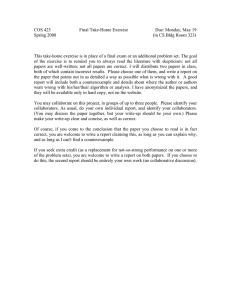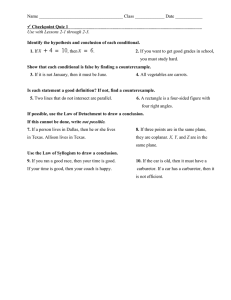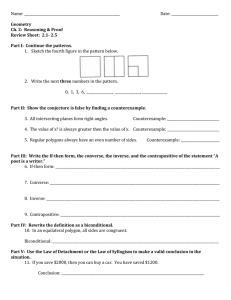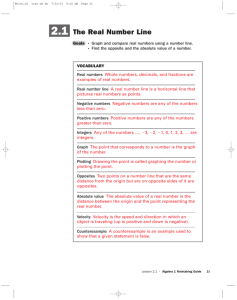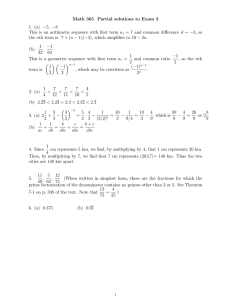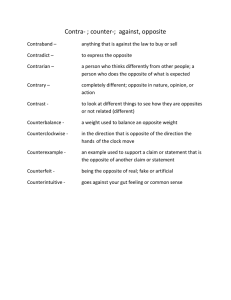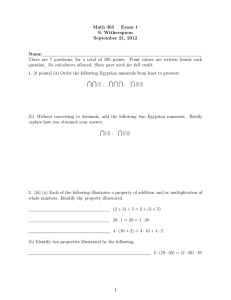Math 365 Partial solutions to Exam 1 − 2122 1. 201 + 324
advertisement
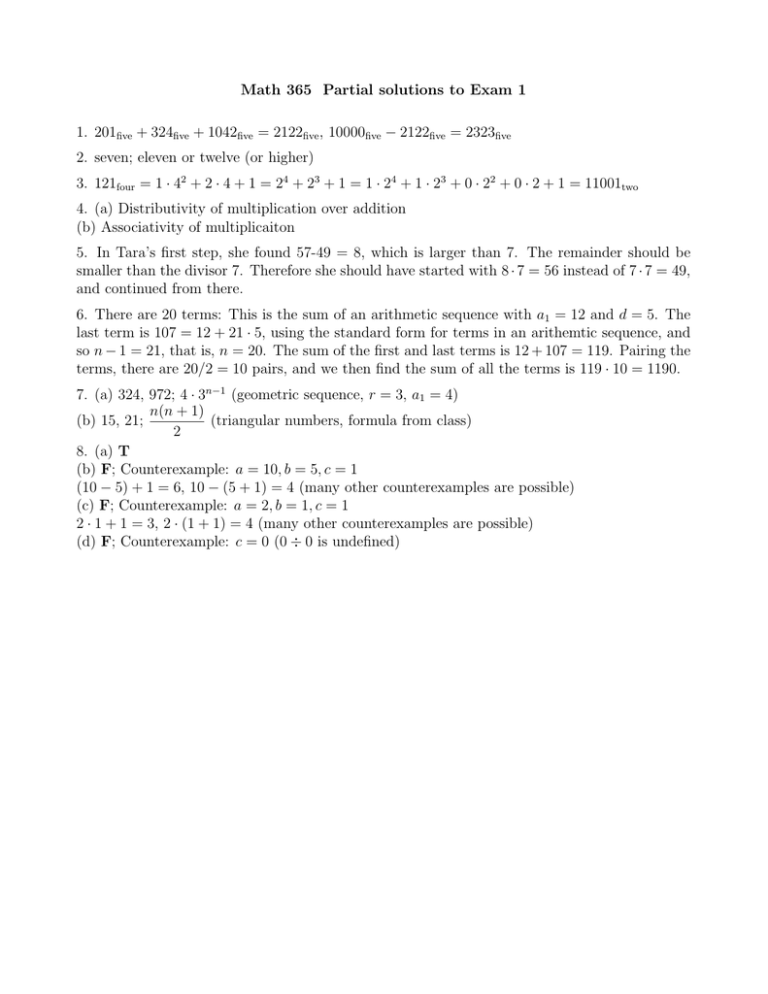
Math 365 Partial solutions to Exam 1 1. 201five + 324five + 1042five = 2122five , 10000five − 2122five = 2323five 2. seven; eleven or twelve (or higher) 3. 121four = 1 · 42 + 2 · 4 + 1 = 24 + 23 + 1 = 1 · 24 + 1 · 23 + 0 · 22 + 0 · 2 + 1 = 11001two 4. (a) Distributivity of multiplication over addition (b) Associativity of multiplicaiton 5. In Tara’s first step, she found 57-49 = 8, which is larger than 7. The remainder should be smaller than the divisor 7. Therefore she should have started with 8 · 7 = 56 instead of 7 · 7 = 49, and continued from there. 6. There are 20 terms: This is the sum of an arithmetic sequence with a1 = 12 and d = 5. The last term is 107 = 12 + 21 · 5, using the standard form for terms in an arithemtic sequence, and so n − 1 = 21, that is, n = 20. The sum of the first and last terms is 12 + 107 = 119. Pairing the terms, there are 20/2 = 10 pairs, and we then find the sum of all the terms is 119 · 10 = 1190. 7. (a) 324, 972; 4 · 3n−1 (geometric sequence, r = 3, a1 = 4) n(n + 1) (b) 15, 21; (triangular numbers, formula from class) 2 8. (a) T (b) F; Counterexample: a = 10, b = 5, c = 1 (10 − 5) + 1 = 6, 10 − (5 + 1) = 4 (many other counterexamples are possible) (c) F; Counterexample: a = 2, b = 1, c = 1 2 · 1 + 1 = 3, 2 · (1 + 1) = 4 (many other counterexamples are possible) (d) F; Counterexample: c = 0 (0 ÷ 0 is undefined)
